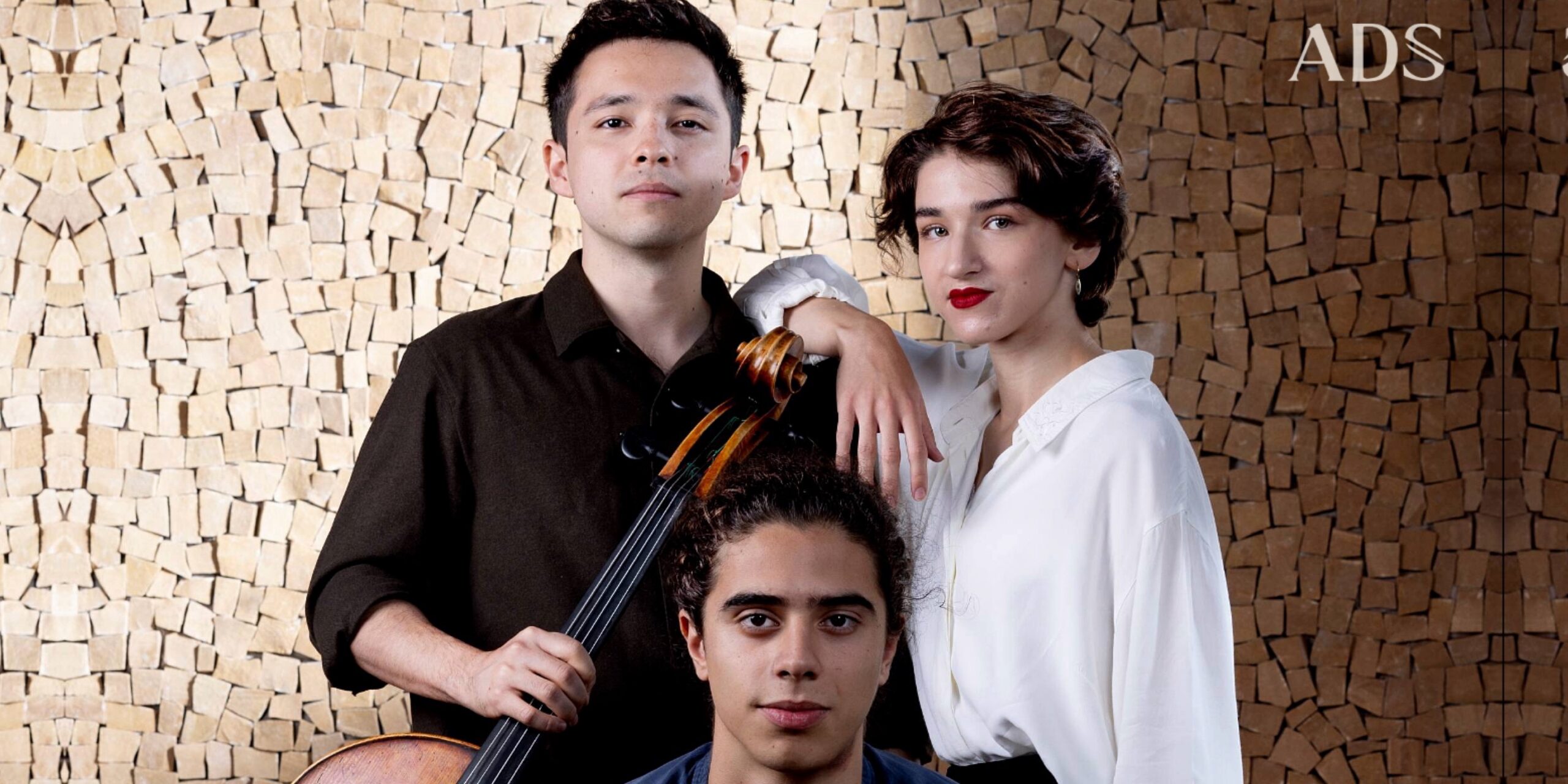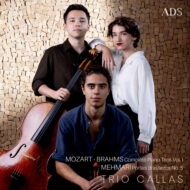Could ‘The Horse’s Mouth’ Be Bigger than We Thought?
Mozart played by three students of the Mozarteum University must be as though it comes straight from the horse’s mouth. Is that so? I compared Mozart’s Fourth Piano Trio, the first item on this new ADS release, with the excellent reading by the ‘Haydn Trio Eisenstadt’ on the Capriccio label (2005). Their Fourth comes as close as to what we all believe Mozart is meant to sound like. Or, in John Broggio’s careful review on HRAudio.net: “almost model Mozartian playing”.
However, listening only a few minutes into the first movement, one discovers that under the inspired hands of Trio Callas, Mozart can be more. Is the horse’s mouth bigger than we thought? Hidden passion? Purists may not agree, but I hold the view that ardent musicians like Bella Schütz (piano), Miguel Rocha (violin), and Lucas Garcia Muramoto (cello) look further than what is commonly believed.
Is it because of the diversity of the global roots of the three players that the pleasing salon-type music gets a slant that lifts it out of the ordinary? In their reading, the score develops into a more passionately oriented Mozart with, indeed, a visionary-coloured palette that suits the music well. Beautifully played, perfectly shaped, shedding a concert-worthy light on familiar repertoire.
Fine Engineering Allows the Listener to Set the Volume at a Realistic Level.
But that is not all. The mastermind behind this new audiophile label turns out to be a sound engineer of top-class allure. A whole section in the accompanying booklet is devoted to the recording set-up and the formats catered for. Surely of interest to similar ‘geeks’, but for us, the listener, it is the result that counts. And I can say without any hesitation that the entire soundscape is many times more satisfying than with most, and certainly the Capriccio version mentioned above.

Furthermore, the obvious advantage of prime Hi-Res engineering is that one can set the volume a notch or two above ‘normal’ to create a realistic ‘venue’ level (sorry neighbours!). Thus, the realism spreads to the individual instruments, notably the cello, becoming a finely tuned, audible stringed instrument the vibes of which one can ‘feel’.
Brahms, the Ultimate Challenge.
Whoever considers Brahms’ Piano Trios naturally think of the monumental Philips recordings with the Beaux Arts Trio, setting a standard by which all others are judged. In the High-Resolution Domain, some impressive recordings have since become available, such as the complete set recorded by the Storioni Trio on the Pentatone label, widely regarded as the best in that format. For newcomers, it presents the ultimate challenge. Interpreting the essence of Brahms’ genial chamber music in audiophile terms is usually the ‘chasse privé of seasoned musicians. In less experienced hands, it may easily turn into a disappointment. Especially failing, however well played, to convey the secret of Brahms’ feelings for Clara Schumann, who, responding upon hearing it for the first time, said it was: “a great musical treat”.
With this in mind, I put Trio Callas’ to the test, and … it passed with flying colours. No deception at all. On the contrary. The gentle enchantment so generously on display in Mozart comes to full, passionate bloom in Brahms’ Second Piano Trio. All three, as equal partners, treat us to a painting rich in substance and breathtaking in musicianship, coming close to the top of the ‘mature’ competition, whilst remaining youthful in expression.
To Fill or Not to Fill, That Used to Be the Question.
Unless a hard copy is contemplated, filling up space to escape complaints from those who want value for money, the question of adding a so-called ‘filler’ is no longer valid. A digital file has no fixed end. Besides, calling Mehmari’s ‘Portais Brasileiros No. 5’ a filler couldn’t be further from the truth. It is a composition in its own right, written for and dedicated to Trio Callas, to reflect “the richness of traditional Brazilian music”. Composed in 2023 and recorded here for the first time, it is no inventive modernist stuff for the sake of it, but a pleasantly configured piece of popular art to suit even the most conservative soul. Well chosen, well done. For me, it was an unexpected revelation, bringing a recital that I really enjoyed to a glorious end.
A great debut, insisting – of course – on more of the same to look forward to!
Blangy-le-Château, Normandy, France.
Copyright © 2025 Adrian Quanjer and HRAudio.net


